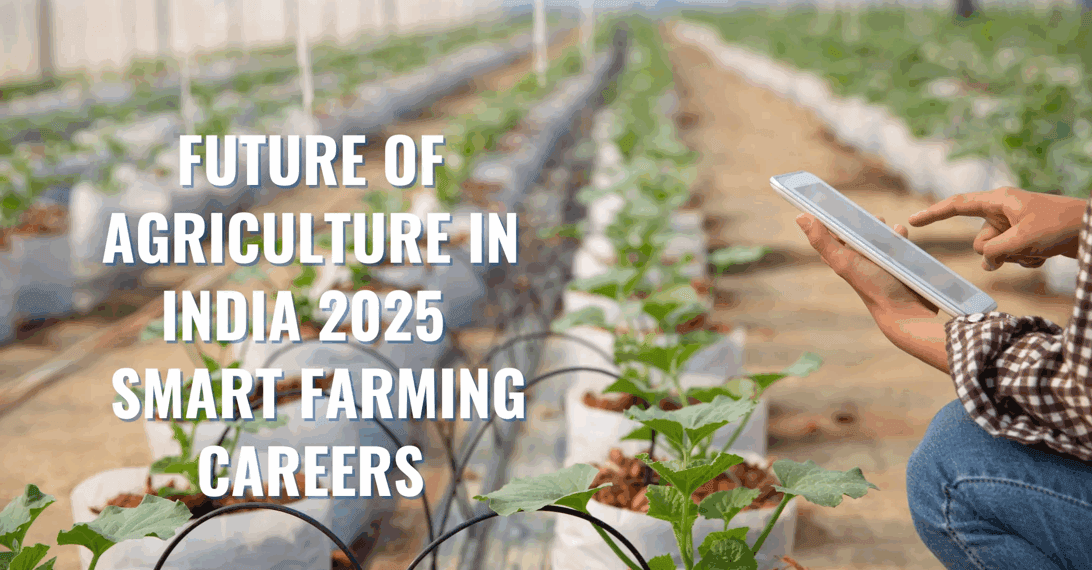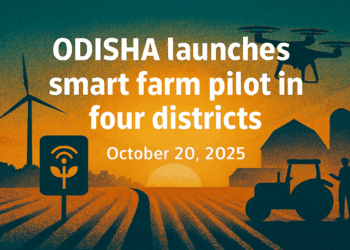Introduction
In 2025, India’s agricultural sector is witnessing a paradigm shift towards smart farming in india. Traditional farming methods are being replaced by smart, tech-driven solutions that promise higher yields, better resource management, and sustainable practices. With the integration of Internet of Things (IoT) and Artificial Intelligence (AI), farmers across India are now equipped with tools that were once considered futuristic. From soil sensors to predictive analytics, smart farming is transforming the way crops are grown, monitored, and harvested.
What Is Smart Farming?
Smart farming refers to the use of modern technologies such as IoT devices, AI algorithms, drones, and big data analytics to enhance agricultural productivity. It enables farmers to make informed decisions based on real-time data, thereby improving efficiency and reducing waste. The goal is to create a more resilient, profitable, and sustainable farming ecosystem.
Core Technologies Powering Smart Farming
1. IoT Sensors
IoT sensors are deployed in fields to monitor soil moisture, temperature, humidity, and nutrient levels. These sensors transmit data to cloud platforms, allowing farmers to track field conditions remotely and make timely interventions.
2. AI & Machine Learning
AI algorithms analyze vast datasets to predict pest outbreaks, irrigation needs, and crop health. Machine learning models continuously improve their accuracy, helping farmers optimize inputs and reduce losses.
3. Drones & UAVs
Drones are used for aerial surveillance, crop spraying, and mapping. They provide high-resolution images that help detect diseases, nutrient deficiencies, and water stress in crops.
4. GPS & GIS Mapping
Precision farming tools like GPS and Geographic Information Systems (GIS) help in land mapping, resource allocation, and yield estimation. These tools ensure that every inch of farmland is utilized efficiently.
5. Mobile Applications
Apps like Kisan Suvidha, AgriApp, and BharatAgri offer farmers access to weather updates, market prices, expert advice, and government schemes. These platforms bridge the digital divide and empower rural communities.
Smart Farming Technologies in India (2025)
| Technology | Application | Adoption Level | Impact on Yield |
|---|---|---|---|
| IoT Soil Sensors | Monitor moisture, nutrients, temperature | High (used in sugarcane, wheat) | +20% yield improvement |
| AI Predictive Models | Forecast pests, irrigation, crop health | Medium (used in tomato, cotton) | +15% efficiency |
| Drones | Crop spraying, aerial mapping | Growing (Punjab, Karnataka) | +30% reduction in pesticide use |
| Mobile Apps | Weather alerts, expert advice | High (pan-India usage) | +10% decision accuracy |
| GIS & GPS Mapping | Precision farming, land analysis | Low (mostly large farms) | +12% resource optimization |
Benefits of Smart Farming in India
1. Enhanced Productivity
Smart farming enables farmers to monitor crop conditions in real-time and take corrective actions instantly. This leads to higher yields and better quality produce.
2. Cost Reduction
By optimizing the use of water, fertilizers, and pesticides, farmers can significantly reduce input costs. Automated systems also lower labor expenses.
3. Climate Resilience
AI-powered models help predict weather patterns, enabling farmers to prepare for droughts, floods, and other climate-related challenges.
4. Sustainable Practices
Smart farming promotes eco-friendly methods by minimizing chemical usage and conserving natural resources. It aligns with India’s goals for sustainable agriculture.
5. Remote Monitoring
Farmers can manage their fields from mobile devices, reducing the need for physical presence and allowing better time management.
Real-Life Examples of Smart Farming in India
1. Maharashtra’s Sugarcane Revolution
Farmers in Maharashtra are using soil moisture sensors and AI-based irrigation systems to optimize water usage in sugarcane fields. This has led to a 20% increase in yield and 30% reduction in water consumption.
2. Punjab’s Drone Deployment
In Punjab, drones are being used for pesticide spraying in wheat and rice fields. The precision and speed of drones have reduced chemical usage and improved crop health.
3. Karnataka’s Tomato Monitoring
Tomato farmers in Karnataka are using AI-powered mobile apps to detect early signs of blight and nutrient deficiency. This has helped reduce crop loss and improve market quality.
Government Initiatives Supporting Smart Farming
1. Digital Agriculture Mission
Launched by the Ministry of Agriculture, this mission aims to integrate digital technologies into farming practices. It includes the development of AgriStack, a unified platform for farmer data.
2. PM-Kisan Drone Yojana
This scheme provides subsidies for drone purchases and training. It encourages the use of drones for spraying, mapping, and surveillance.
3. eNAM Platform
The National Agriculture Market (eNAM) connects farmers with buyers across India, enabling transparent and efficient trade of agri produce.
4. Startup India for Agri-Tech
Agri-tech startups receive funding, mentorship, and incubation support under the Startup India initiative. This has led to the emergence of innovative solutions tailored for Indian farmers.
Challenges in Adoption
1. High Initial Investment
Smart farming technologies require upfront capital for sensors, drones, and software. Small and marginal farmers often struggle to afford these tools.
2. Digital Literacy
Many farmers lack the technical know-how to operate smart devices and interpret data. Training programs are essential to bridge this gap.
3. Connectivity Issues
Rural areas often face poor internet connectivity, which hampers real-time data transmission and remote monitoring.
4. Data Privacy Concerns
Centralized platforms like AgriStack raise questions about data ownership and privacy. Clear policies are needed to protect farmer interests.
Future Outlook: What’s Next for Smart Farming?
By 2030, smart farming is expected to cover over 60% of India’s cultivated land. Emerging technologies like blockchain, satellite farming, and autonomous robots will further enhance efficiency and transparency. Integration with fintech platforms will enable farmers to access credit and insurance based on real-time farm data.
Moreover, collaborations between agri-tech startups, research institutions, and government bodies will accelerate innovation. The fusion of traditional farming wisdom with modern technology will define the next era of Indian agriculture.
FAQs
What is smart farming?
Smart farming uses IoT, AI, and data analytics to optimize agricultural operations and improve productivity.
How does AI help Indian farmers?
AI provides predictive insights on weather, pests, irrigation needs, and crop health, enabling better decision-making.
Are drones used in Indian agriculture?
Yes, drones are increasingly used for crop spraying, aerial mapping, and monitoring field conditions.
What are the benefits of smart farming?
Higher yield, cost savings, climate resilience, remote monitoring, and sustainable practices.
Is smart farming suitable for small farmers?
Yes, especially with mobile apps and affordable sensor kits. Government subsidies also make adoption easier.
Which government schemes support smart farming?
Digital Agriculture Mission, PM-Kisan Drone Yojana, eNAM, and Startup India are key initiatives promoting smart farming.
What are the challenges in smart farming adoption?
High costs, lack of digital literacy, poor connectivity, and data privacy concerns are major hurdles.




















